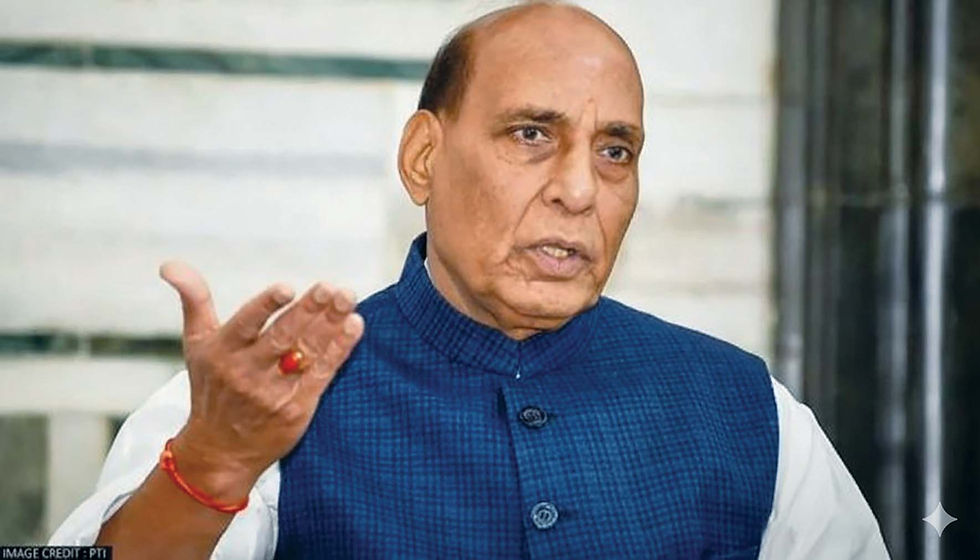China’s Rare Earth Stranglehold
- Commodore S.L. Deshmukh

- Jul 7
- 4 min read
Beijing’s grip on rare earth minerals is reshaping geopolitics, supply chains and industrial strategy, compelling India and other countries to act fast.

Rare Earth Minerals (REMs) are neither rare nor obscure but they have, in relatively recent times, become one of the most potent instruments in the global chessboard of economic warfare. Comprising 17 elements, including the 15 lanthanides plus scandium and yttrium, these metals possess extraordinary magnetic, optical and catalytic properties. From wind turbines to smartphones, missile guidance systems to MRI scanners, the modern world spins, quite literally, on rare earths. Yet, despite their ubiquity in nature, economically viable deposits are hard to come by and even harder to process. That is where China steps in, causing the world to worry.
The People’s Republic commands a near-monopoly over the rare earth ecosystem. While estimates vary, China typically accounts for 70 percent of global REM mining and controls over 90 percent of the world’s processing and refining capacity. Even countries with their own reserves are forced to send ores to China for processing. In the niche market of permanent magnets, so crucial to electric vehicles, aerospace systems and renewable energy, China produces a staggering 95 percent of global supply.
This strategic advantage has not gone unused. In 2010, Beijing throttled REM exports to Japan during a diplomatic row over disputed islands. It was an early glimpse of how minerals could be weaponised in trade and diplomacy. The message has since grown louder. In recent months, China has expanded its restrictions on the export of rare earth products, particularly magnets, impacting a swathe of nations including India, the United States, Japan, South Korea and the European Union. These are deliberate actions, timed to coincide with global distractions like the war in Ukraine and the crisis in Gaza.
The result is global unease and a flurry of diplomatic shuttle-diplomacy. Western powers, already stretched by military commitments and domestic political divisions, have been forced into urgent consultations and contingency planning. By tightening control over REM exports, China has not only secured a stronger hand in trade negotiations but has also demonstrated the potency of supply chain dominance as a geopolitical weapon.
India is no exception to this pressure. While REMs may not be a household term in New Delhi, their absence is already being felt. China’s export curbs, seen by many as retaliatory action against India’s growing assertiveness, particularly Operation Sindoor against Pakistani in retaliation to the Pahalgam terror strike, have triggered significant delays across Indian industries. The automotive sector, white goods manufacturers, electronics firms and defence suppliers are all feeling the squeeze. Without access to rare earth magnets and components, supply chains are stalling.
Faced with this challenge, India has begun charting a course to reduce its dependence on Chinese REMs. Three broad strategies are under consideration: developing domestic sources, investing in recycling and reuse technologies and diversifying import partners in countries like Brazil, Argentina, and Chile. Each path is fraught with its own set of complications. Domestic mining faces environmental hurdles and logistical challenges. Recycling is energy- and water-intensive, and relies on a still-nascent e-waste collection infrastructure. Then, new import sources are often unstable, subject to their own internal politics or Chinese influence.
But doing nothing is not an option. For India, as for the world, the REM crisis is about autonomy. Without secure access to these critical resources, national security, technological advancement and economic growth are all at risk. The Indian government has shown awareness, but its response must now match the urgency of the moment. That requires heavy investment, international partnerships and innovation not just in extraction and processing, but in alternatives and substitutes. Some promising research is under way globally into REM-free magnets and other replacement materials. India must not lag behind.
Meanwhile, countries across the globe are waking up. The United States has reactivated REM mining in California. The EU has earmarked rare earths as a ‘critical raw material’ and is setting up dedicated supply chains. South Korea and Japan are looking to invest in Southeast Asian REM reserves. These moves are necessary, but slow. China’s dominance has been built over decades and cannot be undone overnight.
There is also a lesson here in strategic foresight. For years, the West and its allies outsourced critical mineral dependencies to Beijing, lulled by cheap prices and convenient processing options. That complacency has come at a cost. The rare earth squeeze should serve as a wake-up call not only in matters of trade but in the broader calculus of resilience. In an era where the battlefield includes not just borders but supply chains, control over critical resources is power.
Sun Tzu, the ancient Chinese strategist, once observed that “in the midst of chaos, there is also opportunity.” India, and others in China’s REM shadow, would do well to heed this wisdom. The chaos of today’s disrupted markets offers a rare chance to reset industrial policy, galvanise research, and strike bold partnerships. If seized wisely, this crisis could be the catalyst for a more balanced and secure global order where no single nation can shut down the engines of the modern world.
(The writer is a retired naval aviation officer and defence and geopolitical analyst. Views personal.)





Comments